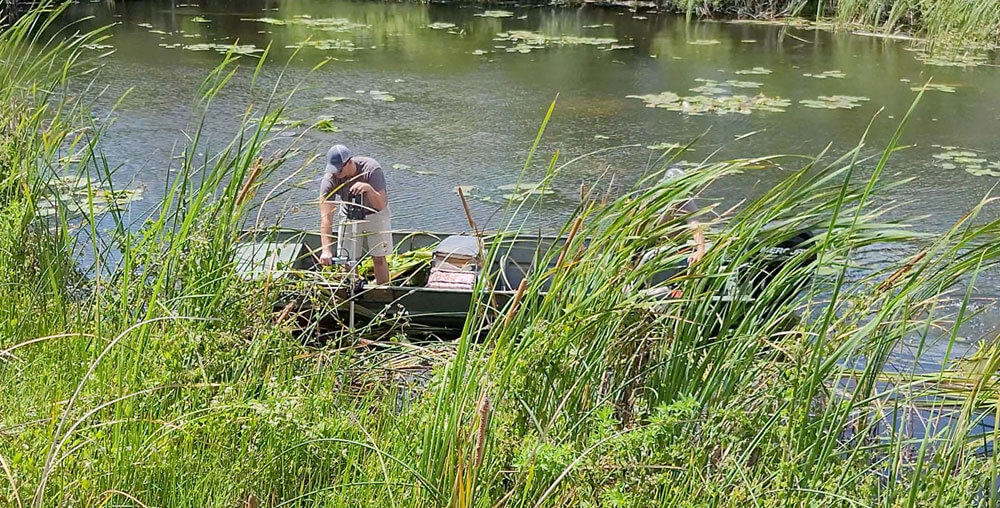
Contrary to popular belief, not all aquatic plants are unwanted. Some plants help maintain a balanced and healthy ecosystem. They are the source of oxygen, food, and shelter for animals living in the water. However, there are some species of aquatic plants that proliferate too quickly and become a nuisance. These invasive aquatic weeds tend to take over the host water body, making it difficult for humans and aquatic animals to freely move or enjoy the environment. They can crowd out beneficial native plants and create foul smells, among other issues. It’s every pond owner’s nightmare, but aquatic weed control methods make it easy to manage these invasive plant species.
Chemical Aquatic Weed Control Methods
Pond owners who want to achieve fast results with the least amount of time and labor use chemical weed control treatment. One method involves the application of pond dye. The color is usually black or blue, and it keeps sunlight from entering the water. Without sufficient sunlight, algae, seaweed, and other unwanted aquatic plants lose the ability to grow. Research has shown that this dye is safe for the aquatic wildlife that lives in the pond.
Those who do not want to see a tint of black or blue in their pond water use aquatic herbicides. Each type of herbicide has different formulations and methods of application. Users should pay close attention to the instructions and warnings that are printed on the label. Aquatic herbicides will give you the same results as pond dyes, however, they can harm fish and other wildlife living in the pond. If not applied according to directions and with proper protective gear, it can also harm the person handling it.
Mechanical and Non-Chemical Control Methods
Owners who don’t want to risk harming other organisms living in the pond choose mechanical or other non-chemical methods for controlling aquatic weeds. These methods are more eco-friendly and, in the long run, more affordable. At the top of the list of non-chemical plant control methods is manual aquatic weed cutting or harvesting. The pond owner cuts or pulls out the unwanted plants by hand or with the use of a garden hoe or other manual tools.
Those methods may become unpractical when you need to remove aquatic weeds from deeper areas. Seeing the underwater weeds can be difficult, especially if the water is murky. A more efficient way to control aquatic weeds is with an underwater mower like the Jenson Lake Mower along with the Jenson Lake Rake. The boat-mounted aquatic mower and rake work in tandem to cut and remove invasive water plants regardless of how deep or shallow the areas are. As long as you can reach the area with a boat, the Lake Mower will cut it. Many customers have found that when some species of aquatic plants are cut regularly it drastically reduces their growth the following season.
